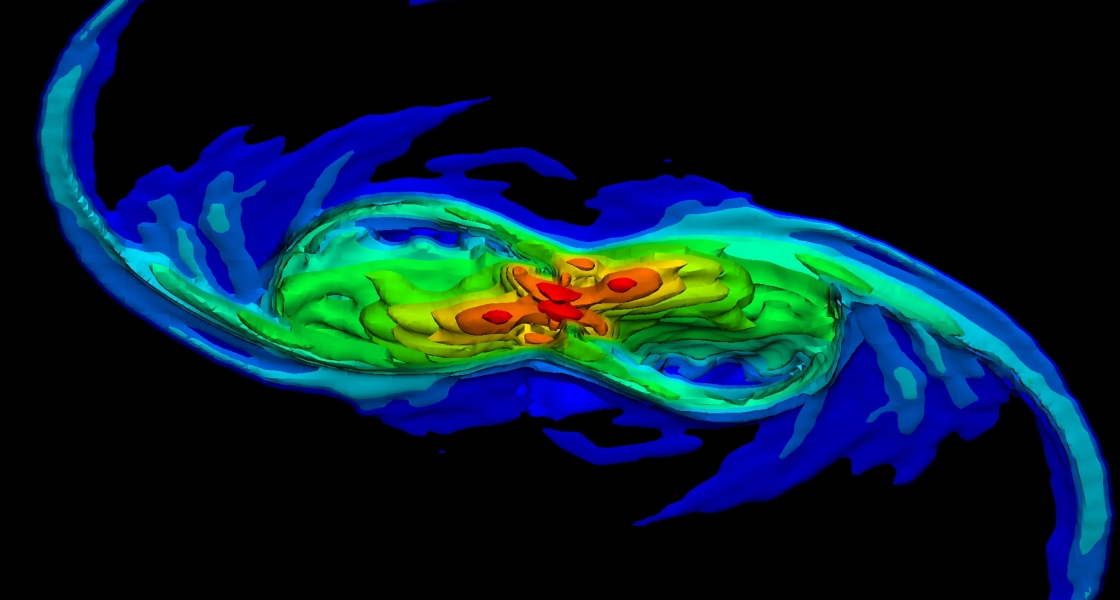There are two competing ideas about the origin of the monster black holes at the center of galaxies. Both include exceptional stars that have never actually been observed: (1) massive population III (Pop III) stars (as big as a thousand Suns) made of pure hydrogen and helium that would have formed less than 100 million years after the Big Bang, and (2) gigantic quasistars whose shining envelopes were powered, not by nuclear fusion, but by energy emitted by the black holes inside them. These black holes would have been formed directly from the partial collapse of dense gas clouds about 500 million to a billion years after the Big Bang. The quasistars would have evaporated after about two million years after the formation of the black holes in their centers. They left behind “seed” black holes with masses of a hundred thousand suns, according to a theory developed by Fellow Mitch Begelman and his colleagues at JILA, Cambridge University, the University of Michigan, and the University of Kentucky (see JILA Light & Matter, Winter 2010).
In contrast with the quasistars, the equally short-lived Pop III stars would have formed black hole seeds of only about 50 stellar masses in stupendous supernovae explosions. However these seeds would have had up to a billion years longer to grow larger through galaxy mergers.
So, the question now is simple: Which theory can account for both the supermassive black holes believed to be at the center of most or all of today’s galaxies and the luminous quasars that arose in the early Universe?
Quasars are the active galactic nuclei of ancient galaxies. The most luminous objects in the Universe, they are powered by accretion disks around monster black holes in their centers. Quasars figure prominently in discussions of the evolution of monster black holes because they (and their central supermassive black holes) appeared much earlier in the history of the Universe than the vast majority of galaxies organized around similarly gargantuan black holes.
Recently, Begelman and his colleague Marta Volonteri of the University of Michigan decided to model the evolution of black holes from both Pop III stars and quasistars to see whether either alone could account for the early quasars and the gargantuan black holes inside galaxies today. The researchers found that for Pop III stars to produce all the black holes in the Universe, everything, including approximately 10 mergers per galaxy, must have come together perfectly — with no ejections of black holes. Begelman says this scenario for forming monster black holes inside galaxies is possible, but unlikely.
Explaining quasars is another matter, however. The evolution of Pop III stars cannot explain the formation of the quasars’ monster black holes as early as they appeared in the Universe. There simply would not have been enough time for the relatively small black hole seeds produced by Pop III stars to grow as large as those powering the quasars.
However, if quasistars were the progenitors of monster black holes, they could lead to both the modern distribution of monster black holes at the center of galaxies and the early quasars.
Of course, there is also the possibility that both processes may have been at work in the early Universe. If so, Begelman says it would have been unlikely for a quasistar to form in a galaxy that already had a black hole created by the supernova of a Pop III star. There shouldn’t have been enough gas available for the direct collapse into another black hole.
Interestingly, there may be way to discern if just one or both processes contributed to the formation of monster black holes — with observations from the new James Webb Space Telescope, scheduled for launch in 2014. If Pop III stars existed at the predicted sizes and distributions, the new telescope should easily be able to detect clusters of them. In principle, the same telescope could also detect quasistars. If they exist, there should be one in every field of view, according to Begelman. Right now, he’s trying to think of a clever way to identify them, so it won’t be like looking for a needle in a haystack.
To settle the question of the reality of quasistars, a powerful new wide-field telescope on Earth should work much better than the James Webb Space Telescope, says Begelman. The University of Colorado has joined a consortium led by Cornell University to build a new submillimeter radio telescope in the high Atacama Desert of Chile. This instrument should be able to observe galaxies in the process of formation and the early growth stages of monster black holes.
In the meantime, Begelman is investigating whether a quasistar could form in a galaxy already home to a Pop III black hole seed and refining his model for the growth of monster black holes from quasistars. As yet, there is no definitive answer on whether Pop III or quasistars gave rise to today’s monster black holes. It may even turn out that both processes played a role in shaping the Universe. Stay tuned. - Julie Phillips




